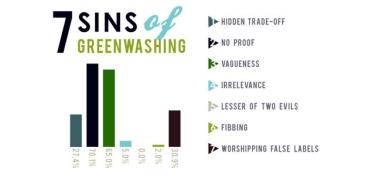Green Bonds or Green washing?
The latest rage in environmental finance is the green bond. Christiana Figueres the Executive Secretary of the UN Framework Convention on Climate Change even declared optimistically and perhaps hopefully at the 2014 Investor Summit on Climate Risk in January that 2014 would be the year of the GreenBond (http://www.ceres.org/investor-network/investor-summit ). Based on the issuances and financing of green bonds in 2014 and 2014, most people would agree that Green bonds have taken off and this is the first year where green bond financing has increased significantly from almost nothing to a small player in the finance sector.
The question remains, what makes a bond green? The definition of a green bond is evolving but one recognized definition is encoded in the green bond principles. A subset of green bonds are what are called Climate Bonds. These are primarily promoted by the Climate Bonds Initiative. Now a number of organizations are starting to define what is a and is not a green bond upfront. Examples of green bonds that are generally accepted are bonds where the financing is going to renewable energy projects, energy efficiency, waste to energy, mass transit including subways or light rail transit as well as others. Here is a list of potential projects that have started to be defined by as acceptable for financing by green bonds (link to green bond or climate bond definition).
However, since this is early days of the green bond market, it is still a little like the wild west out there. What does that mean? It means that there are no rules as of yet and some organizations and people are taking the opportunity to define on their own what a green bond is or is not. For example if an oil refinery is looking for financing could you consider this a green bond? What about a waste water treatment project? what about if the funding is used for general “green” projects which are yet to be defined?
Bonds are of course one method for getting financing for your project. What this means is that most of the organizations and people involved in bond financing are only interested in the interest rate, the yield, the tenor and the risks associated with the underlying investment and how well it matches with the rate being charged and how well it fits the needs or gaps of the buyers portfolio. In addition, they are also interested in the liquidity of the investment, is there another market ( a secondary market) where once the bond has been issued by the sponsoring financial organization the bond can be sold to another buyer. The questions is is how many of these green bond financiers both from the buy side and the sell side are interested in the green – supposed – benefits of the projects being funded by the green bond.
The question is what is a green bond and what makes it green? Is a green bond which is used to pay for a new subway a green bond? No-one would argue that a subway will move people from cars meaning less fuel burned and less greenhouse gas emissions particularly if the electricity powering the subway is clean (and does not include any coal). That is the situation in Ontario where the the Ontario government issued a green bond to pay for the construction of a subway line in Toronto. Do they need a green bond for this? They government would have probably financed this with a bond regardless. Does this mean that the subway will be “greener” than otherwise because it is now financed with a green bond? What are the differences between a normal bond and green bond? Is there a lower interest rate for the borrower or any sort of preferred terms? I suspect not and if not then the financing is the same and what is the label “green” for. In this case, the answer could be marketing and branding?
If we look at green bonds through the lens of greenwashing…what do we find? Sustainable brands has a good set of guidelines for if your ecofriendly products are green washing. As sustainable brands says at least 95% of products are guilty of breaking at least one of the sins of greenwashing. Let’s see look at green bonds …
First the sevens sins as shown below are taken straight from here.
- Hidden Trade-Off: Labeling a product as environmentally friendly based on a small set of attributes (e.g., made of recycled content) when other attributes not addressed (e.g., energy use of manufacturing, gas emissions, etc.) might make a bigger impact on the eco-friendliness of a product as a whole.
Green bonds – I would argue that some green bonds are being labelled based on one or a small set of attributes as opposed to looking at the entire product or the entire project that is being funded. However, at the same time there are some projects funded by green bonds which are looking at many attributes.
VERDICT – Partially guilty
Stay tuned next week for the other sins of greenwashing and how green bonds rate!
